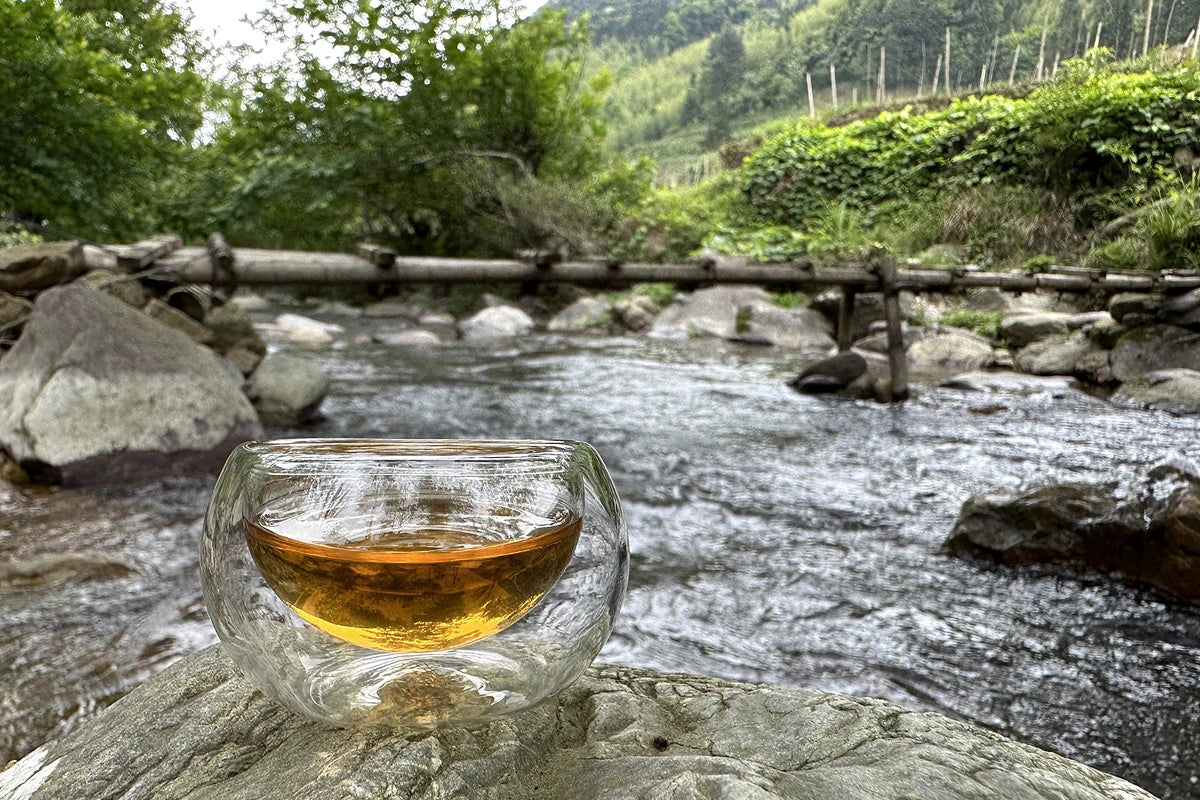Из-за ограниченного производства китайский дикий чай занимает относительно нишевую нишу в китайском чае . В то же время китайский дикий чай любим многими любителями чая за его уникальный вкус и аромат, и он считается одним из лучших листовых чаев .
В этой статье будет предоставлена информация о выборе, заваривании и хранении дикого чая, что поможет вам в полной мере насладиться его вкусовыми качествами.
Выбор дикого чая

Кроме того, из-за редкости дикого чая вы можете столкнуться с ситуациями, когда чай из чайных садов продается как дикий чай. Вы можете определить, является ли купленный вами чай диким чаем, основываясь на следующих аспектах.
1. Характеристики листа
- Листья тонкие и узкие , с тонкими черешками, что создает ощущение дефицита питательных веществ .
- Из-за недостатка солнечного света окраска листьев становится светлее , ближе к желто-зеленому цвету .
- Можно собирать только вручную , с неровными срезами на стеблях.
- Чайные деревья растут естественным образом, что приводит к неоднородности нежности и размера листьев.
- Без какого-либо ухода со стороны человека листья часто покрываются отверстиями для насекомых .


2. Аромат и вкус
- Аромат более интенсивный и стойкий , с элегантным оттенком.
- Вкус чая более насыщенный , с глубоким и длительным послевкусием и заметным слюноотделением .
- Из-за меньшего воздействия солнечного света в чайном настое содержится больше антоцианов , из-за чего он может иметь коричневатый оттенок .

3. Происхождение
- В основном добывается в отдаленных горных районах или лесах; проявляйте осторожность, если информация об источнике неясна.

Поскольку дикие чайные деревья в основном растут в отдаленных горных районах и неуправляемы, процесс роста диких чайных деревьев обычно не требует удобрений или пестицидов. Если вы хотите купить китайский органический листовой чай , вы можете поискать в ассортименте китайского дикого чая. Перед покупкой обязательно проверьте органическое тестирование и сертификацию профессиональными организациями , чтобы убедиться, что вы покупаете настоящий органический листовой чай.
Как заваривать дикий чай?

1. Дикий зеленый чай
2. Дикий белый чай
3. Дикий чай улун
4. Дикий черный чай
5. Дикий тёмный чай
Поскольку погода постепенно становится жаркой, помимо использования этих обычных методов заваривания горячей водой, вы также можете использовать холодное заваривание для заваривания листового чая. Некоторые виды листового холодного чая очень вкусны и их стоит попробовать, особенно в жаркую погоду.

Как хранить дикий чай?

Методы хранения различных сортов дикого чая существенно различаются. Пожалуйста, выберите соответствующий метод заваривания в зависимости от сорта.
1. Дикий зеленый чай
2. Дикий белый чай
3. Дикий чай улун
Для длительного созревания дикого улуна, сохраняя при этом вкус лучшего улуна , выбирайте дышащие горшки из исинской глины или керамические банки . Поддерживайте соответствующую влажность и вентиляцию , чтобы способствовать естественному созреванию чайных листьев.
4. Дикий черный чай
5. Дикий тёмный чай
Темный чай можно хранить в течение нескольких лет, но его необходимо регулярно проверять, чтобы убедиться в отсутствии таких проблем, как сырость, плесень или вредители , и эти проблемы следует решать незамедлительно.
Помимо этих восхитительных диких чаев, есть много других разнообразных сортов китайского чая, из которых вы можете выбирать. Вы можете начать с некоторых известных китайских чаев, таких как Лунцзин, Тегуаньинь , Да Хун Пао и выдержанный Пуэр. Рекомендуется использовать пробник листового чая, чтобы попробовать различные чаи, а затем выбрать понравившиеся вам вкусы. Кроме того, китайские чаи станут прекрасным подарком в виде подарочных наборов для чая .

Мы надеемся, что вы откроете для себя больше радости в мире китайского чая и ощутите наслаждение и умиротворение, которые он приносит вашему разуму и телу.












































































